Table of contents
Apricots ( Prunus armeniaca) are also known as apricots in some regions. They are rich in antioxidants and phenols when eaten raw or as organic fruits.
Use in the kitchen
Can you eat apricots raw? In the kitchen, apricots are popular as a raw food snack or as an ingredient in muesli, e.g. in pea muesli, in vegan yoghurt or in a fruit salad with peaches,raspberries,blueberries or strawberries. They are also often used in the preparation of vegan desserts such as cakes, tortes, gingerbread, tarts or strudels. Their natural sweetness makes them perfect for making jams, jellies, juices, nectar or fruit puree. But apricots can also provide fruity freshness in savoury cuisine, e.g. in chutneys, as pickled fruit, in salads, on grilled skewers (e.g. tofu and apricot skewers), in soups (raw apricot and tomato soup) or curries.
Since apricots are stone fruits, they contain a stone, which is easy to remove. To do this, simply halve the apricot and remove the stone.
Their use in the kitchen is not limited to raw apricots; they are also highly valued in dried form (e.g. in homemade muesli mixes or in fruit bars).
The oil extracted from the kernel, which contains many essential fatty acids, is also a popular ingredient in desserts and salad dressings. Apricot kernels are divided into sweet and bitter kernels. The decisive factor in the classification is the percentage of amygdalin, which is responsible for the bitter taste. Sweet apricot kernels are mostly used in cooking. 6 Bitter apricot kernels should only be consumed with caution. The glycoside amygdalin they contain, from which hydrogen cyanide is released during digestion, can lead to symptoms of poisoning and respiratory paralysis if consumed in large quantities. 17 Further processing and heating during cooking or baking largely evaporates the hydrogen cyanide and the products are safe to consume. 18 Apricot kernels are used, among other things, as a basis for making persipan, a marzipan-like sweet. The popular Amaretto also gets its characteristic, slightly bitter 'marzipan note' from apricot kernels.
Vegan recipe for apricot jam with herbs and flowers
If you want to try the recipe without sweetener, i.e. just with the sweetness of the fruit, skip step 2 and puree the apricots directly. We recommend using very ripe, soft apricots.
Ingredients: 1 kg apricots (raw, organic); 200-250 g sweetener to taste (e.g. coconut blossom sugar, whole cane sugar or agave syrup); 2-3 tsp agar agar ; lemon juice from half an organic lemon ; Option 1: fresh herbs such as rosemary (organic), thyme (organic), mint (organic) or lemon balm (organic); Option 2: flowers such as rose petals (organic) or lavender flowers (organic); jars with screw caps.
Preparation: Wash the apricots, halve them and remove the stones. Put the halved apricots in a pot with the sweetener and leave to steep for a couple of hours, add the lemon juice and let it simmer on the stove for about 10 minutes. Then puree the fruit, add the agar-agar and the herbs/flowers and cook for a couple of minutes more, pour the jam into the prepared jars while it is still hot and seal. With agar-agar it takes about 3 hours for the jam to gel completely. The unsweetened version has a shelf life of about 2 weeks when stored in a cool place. With sweeteners the shelf life increases to several months.
Vegan recipes with raw apricots can be found under the note: " Recipes that have the most of this ingredient ".
| Not only vegans or vegetarians should read this: Vegans often eat unhealthily. Avoidable nutritional errors. |
Purchasing - Storage
In supermarkets such as Coop, Migros, Denner, Volg, Spar, Aldi, Lidl, Rewe, Edeka, Hofer, Billa etc., you can often find apricots in the summer range. However, some of the fruit is not locally grown, but is imported. Apricots are also available in organic supermarkets (such as Denn's Biomarkt and Alnatura) and at regional weekly markets. Depending on the variety, the period for the availability of local produce extends from mid-June to August 1, occasionally until September. 23 Imports from neighboring countries such as Italy or Croatia mainly take place between the beginning of May and August. Some supermarkets also offer imported apricots in the winter half, which then mainly come from South America. 16
The availability of apricots (raw) varies depending on the size of the store, catchment area, etc. Our recorded food prices for the DA-CH countries can be found above under the ingredient image - and by clicking you can see their development at various suppliers.
Storage tips
Apricots have a short shelf life. It is therefore advisable to use ripe fruit as quickly as possible. If you press against the fruit with a finger and the flesh gives a little, then the apricot has reached its ripeness. However, it is also possible to allow ripe fruit to ripen. To do this, it is advisable to store it at room temperature (in a well-ventilated place and without the fruit touching each other) until it is ripe enough to eat. 2
Ingredients - Nutritional values - Calories
A raw apricot contains around 48 kcal/100g and consists of around 86% water. 5 The carbohydrate content is 11 g/100g. Proteins (1.4 g/100g) and fats (0.39 g/100g) are only found in small quantities. 4 However, the proteins present are rich in essential amino acids. 3
The apricot is a good source of nutrients and vitamins. 100 g of raw apricots contain 259 mg of potassium, which covers 13% of the daily requirement. Cantaloupe melons (267 mg/100g), aronia berries (242 mg/100g) and plums (240 mg/100g) have similar values. Fruits rich in potassium include avocados with 485 mg/100g and guava with 417 mg/100g. 4
The vitamin C content of apricots is 10 mg/100g, which is around 13% of the daily requirement. This is roughly the same as the amount inblueberries (9.7 g/100g) or raw plums (9.5 g/100g). Sea buckthorn berries are an excellent source of vitamin C, with 450 mg/100g, more than five times the daily requirement. 4
Apricots also contain 96 µg/100g of vitamin A, which is 12% of the daily requirement. Comparable amounts can be found in beef tomatoes (99 µg/100g), Japanese persimmons (81 µg/100g) and loquats (76 µg/100g). Carrots are extremely rich in vitamin A, with 835 µg/100g. 4
The combination of secondary plant substances in apricots is particularly valuable. The abundance of carotenoids, phenols and flavonoids is the basis for the antioxidant properties. The most important flavonoids include glycosides, rutinosides of quercetin, kaempferol and rutin. Among the phenols, chlorogenic acid, catechin, epicatechin and rutin are worth mentioning. The bioactive carotenoids include β-carotenes, lycopenes, β-cryptoxanthin, lutein, phytofluene and zeaxanthin. The concentration of the individual secondary substances can vary depending on the genotype, agroclimatic conditions, degree of ripeness and storage.
The complete ingredients of apricot (raw), the coverage of the daily requirement and comparison values with other ingredients can be found in our nutrient tables. In the article Nutrients explained you will get a detailed insight into the topic.
Health Effects
Are apricots healthy for weight loss? Apricots contain a lot of fiber, which stimulates intestinal activity. Soluble fiber in particular is considered to be an aid to weight loss. It not only lowers cholesterol in the blood, but also balances blood sugar levels. 3 With simple carbohydrates in particular, blood sugar levels rise quickly, but then fall again quickly, which causes a feeling of hunger again. A balanced blood sugar level is therefore a good basis for a long-term feeling of satiety. However, in order to lose weight healthily and avoid a yo-yo effect, there are more aspects to consider. You can find detailed background information on this in our article Lose weight healthily and permanently.
The production of free radicals causes oxidative stress, which can lead to pathogenesis and chronic diseases in the long term. The antioxidants in apricots act as radical scavengers and reduce oxidative stress. They also have a positive effect on coronary heart disease. 3,6
Apricots also make a valuable contribution to eye health. The antioxidants help to maintain the integrity and fluidity of the eye membranes. The carotenoids zeaxanthin and lutein protect the eyes through their light filtering function. 6
The large number of flavonoids leads to an activation of the red blood cells and makes apricots valuable for strengthening the immune system. 6 Flavonoids are significantly involved in cellular processes, which is why they are considered potentially anti-carcinogenic. 3 Studies also show positive effects on cardiovascular diseases, Parkinson's and Alzheimer's. 5
The combination of vitamins, carotenoids and flavonoids in apricots has a positive effect on the liver and protects against liver toxicity as well as fatty liver disease. 6
The apricot contains organic acids that maintain the acid-base balance in the intestine and increase the bioavailability of iron. 6
Dangers - Intolerances - Side effects
Apricots have no effect on intolerances such as gluten intolerance, histamine intolerance, fructose malabsorption and lactose intolerance. However, cross-reactions can occur in the case of a birch allergy or a latex allergy. If you are hypersensitive to salicylic acid, you should also only consume apricots in small quantities. 12
Some studies mention the health benefits of apricot kernels in relation to diseases such as cancer, diabetes, high blood pressure or inflammation due to their amygdalin content. 19 However, caution is advised here, as the digestion of amygdalin leads to the release of cyanide (hydrogen cyanide). A relatively low dose of 0.5-3.5 mg cyanide/kg body weight can be fatal. The Federal Institute for Risk Assessment ( BfR) generally recommends that children avoid eating bitter apricot kernels; adults should not consume more than two apricot kernels per day. 20
Folk medicine - naturopathy
The use of apricot fruits in traditional Chinese medicine ( TCM) aims to detoxify and regenerate the body's fluids. 3 As 'Kuxingren' (kǔ xìng rén), the bitter apricot kernels (Armeniacae semen amarum) are used to treat coughs, wheezing or constipation. This does not only include the kernels of Prunus armeniaca; Prunus mandshurica and Prunus sibirica are also used. In the German Drug Code ( DAC 2019), however, refined apricot kernel oil is listed (Pruni armeniacae oleum raffinatum, synonym: Oleum Pruni armeniacae). 10
Due to its ingredients, the apricot is considered to be anti-asthmatic, analgesic, antiseptic, expectorant, antipyretic, calming and eyesight-strengthening. 3
Ecological footprint - animal welfare
The ecological footprint of apricots depends on various aspects. In general, consumption of regional production means a better CO 2 balance, as there is no need for long transport. However, the cultivation method also has an important influence on the ecological footprint. The comparison of integrated cultivation with biodynamic cultivation of apricots shows that biodynamic farming has both a lower impact and lower energy consumption per kg. In addition, the biodynamic cultivation system results in a higher CO 2 storage in the soil in the long term. 13 Compared to other crops such as hazelnuts, pears, kiwis, apples, nectarines or plums, apricots require fewer natural resources in relation to their yield. 14 The CO 2 footprint of apricots is around 0.55 kg CO 2 eq/kg. The biggest influencing factors are cultivation on drained soils and the frequent use of agricultural machinery. 15
The water footprint of apricots varies depending on the context, as each country has different requirements for sustainable agricultural production. Globally, the water footprint is around 1300 l/kg. What is interesting here is that the value in the EU is 169 l/kg and in Switzerland it is slightly lower at 114 l/kg. 21,22
Worldwide occurrence - cultivation
The apricot originally comes from China. Cultivation is documented here from around 2000 BC. The fruit eventually reached the Mediterranean region via the Persian Empire, where it is now an important cultivated plant. 3 The main growing areas are in Turkey (here the province of Malatya is considered the center for apricot cultivation), in Uzbekistan, Iran, Algeria and Italy (2020). 4 There are also regional growing areas in Central Europe, for example the Wachau in Austria or the Valais in Switzerland.
Found in the wild
The apricot ( Prunus armeniaca) is not a wild-growing plant, but is created by grafting. However, there is the wild-growing species Prunus brigantina, which is found in Italy and France and is known as the Briançon apricot . 11
Cultivation - Harvest
Apricots require cool winters, but moderate summer temperatures in spring/early summer. Late frosts pose a great risk to a successful harvest. 3 Well-drained, fertile soils with an alkaline pH value (7) are particularly suitable for cultivation, but sandy soils should be avoided. 6 Apricot trees do not last very long and show signs of aging after around 15 years. 7
Growing in your own garden
The best time to plant an apricot tree is spring after the winter frosts. Make sure that there is enough water. 8 The location should be sunny and sheltered from the wind. The soil should be clayey to loess, with a high humus content. In subsequent years, it is best to fertilize with around three liters of garden compost per square meter, each spring. Growing late-flowering varieties such as 'Bergeron' minimizes the risk of crop failure due to late frosts. Growing apricots in your own garden can also be successful in regions with less favorable climates. For this, placing them on a south-facing wall in the form of espalier fruit is recommended. 7
Further information
From a botanical point of view, the apricot ( Prunus armeniaca) is a member of the rose family (Rosaceae). It belongs to the genus Prunus, which includes many popular types of fruit, such as the sweet cherry ( Prunus avium), the plum ( Prunus domestica) or the peach ( Prunus persica).
Apricot and peach, what is the difference? If you look at the fruit, the difference in size is particularly noticeable. With a diameter of around 3 cm, apricots are smaller than peaches, which reach a diameter of around 6 cm. The two fruits also differ in color. While apricots are more yellowish-orange in color, peaches are darker and more orange-reddish. If you ask the question in terms of the entire plant, however, the apricot leaves are a decisive feature. On an apricot tree, the leaves on the stem are slightly reddish in color. 8,9
Generally, the fruits of Prunus armeniaca are considered apricots, but there are some related species that bear similar fruits and are often given the general name apricots. These include the Japanese apricot or ume ( Prunus mume), the Briançon apricot ( Prunus brigantina), the Manchurian apricot ( Prunus mandshurica) and the Siberian apricot ( Prunus sibirica). 5
Alternative names
In Austria and southern Germany, the apricot is known as Marille, in the Rhine-Hesse region it is also called Malete. Incorrect spellings such as Apricot occur.
In English-speaking countries it is called apricot.
Bibliography - 23 Sources (Link to the evidence)
| 1. | Bundeszentrum für Ernährung de: Der Saisonkalender. |
| 2. | Biologie-Seite de: Klimakterium (Botanik). |
| 3. | Ali S, Masud T, Abbasi KS, Mahmood T, Hussain A. Apricot : nutritional potentials and health benefits-a review [Internet]. 2015. |
| 4. | USDA United States Department of Agriculture. |
| 5. | Al-Soufi MH, Alshwyeh HA, Alqahtani H, Al-Zuwaid SK, Al-Ahmed FO, Al-Abdulaziz FT, u. a. A review with updated perspectives on nutritional and therapeutic benefits of apricot and the industrial application of its underutilized parts. Molecules. 7. August 2022;27(15):5016. |
| 6. | Hussain SZ, Naseer B, Qadri T, Fatima T, Bhat TA. Fruits grown in highland regions of the himalayas: nutritional and health benefits [Internet]. Cham: Springer International Publishing; 2021. |
| 7. | Mein schöner Garten de: Aprikose, Aprikosenbaum. 2019. |
| 8. | Baumkunde de: Prunus armeniaca. |
| 9. | Baumkunde de: Prunus persica. |
| 10. | Heilpflanzen Atlas de: Aprikose. 2023. |
| 11. | Powo Science Kew org: Prunus brigantina. |
| 12. | Schneider A. Das grosse Lexikon der Nahrungsmittel & Unverträglichkeiten. BoD – Books on Demand; 2013. 254 S. |
| 13. | Pergola M, Persiani A, Pastore V, Palese AM, Arous A, Celano G. A comprehensive Life Cycle Assessment (Lca) of three apricot orchard systems located in Metapontino area (Southern italy). Journal of Cleaner Production. Januar 2017;142:4059–71. |
| 14. | Cerutti AK, Beccaro GL, Bagliani M, Donno D, Bounous G. Multifunctional Ecological Footprint Analysis for assessing eco-efficiency: a case study of fruit production systems in Northern Italy. Journal of Cleaner Production. Februar 2013;40:108–17. |
| 15. | Carboncloud com: Apricot. |
| 16. | Lebensmittellexikon de: Saison- und Importkalender - Obst. |
| 17. | Bundesinstitut für Risikobewertung de: Bittere Aprikosenkerne können zu Vergiftungen führen. |
| 18. | Verbraucherzentrale de: Bei natürlichen Schadstoffen in pflanzlichen Lebensmitteln aufpassen. 2023. |
| 19. | Akhone MA, Bains A, Tosif MM, Chawla P, Fogarasi M, Fogarasi S. Apricot kernel: bioactivity, characterization, applications, and health attributes. Foods. 22. Juli 2022;11(15):2184. |
| 20. | Bundesinstitut für Risikobewertung de: Zwei bittere Aprikosenkerne pro Tag sind für Erwachsene das Limit - Kinder sollten darauf verzichten. 009/2015. |
| 21. | Mekonnen, M.M. and Hoekstra, A.Y. Water footprint benchmarks for crop production, Value of Water Research Report Series No. 64, UNESCO-IHE, Delft, the Netherlands (2013). |
| 22. | Agromarketing Suisse ch: Warum sind Schweizer Agrarprodukte oft umweltfreundlicher als importierte Produkte? 2021. |
| 23. | Coop ch: Saisonkalender Gemüse Früchte. |

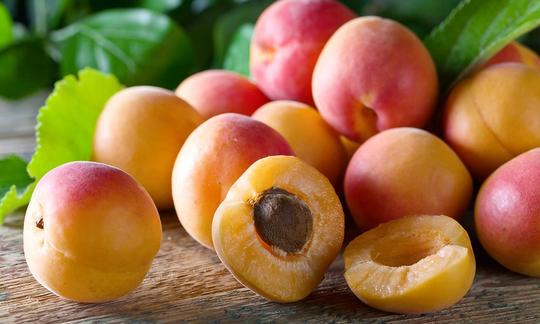

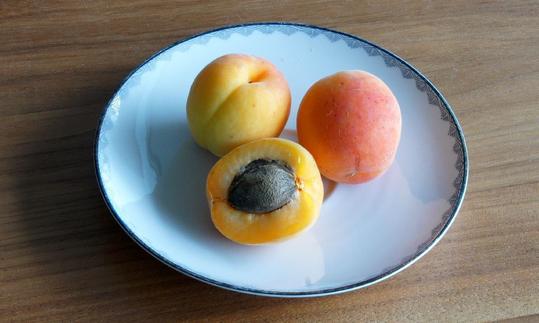

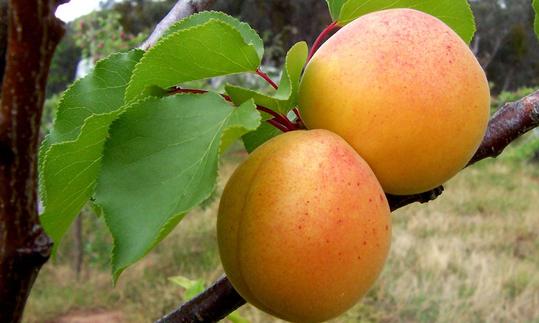

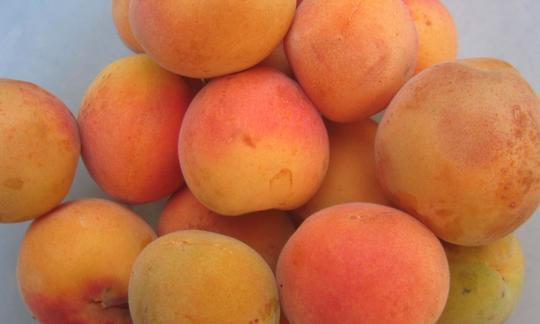


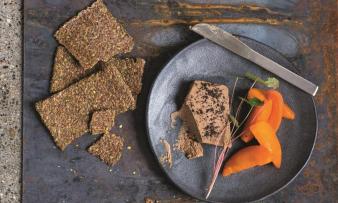
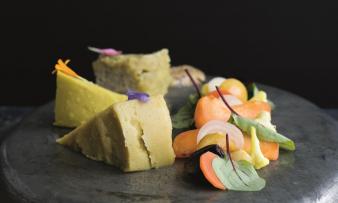
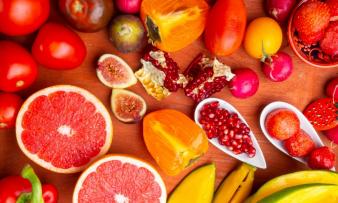




Comments